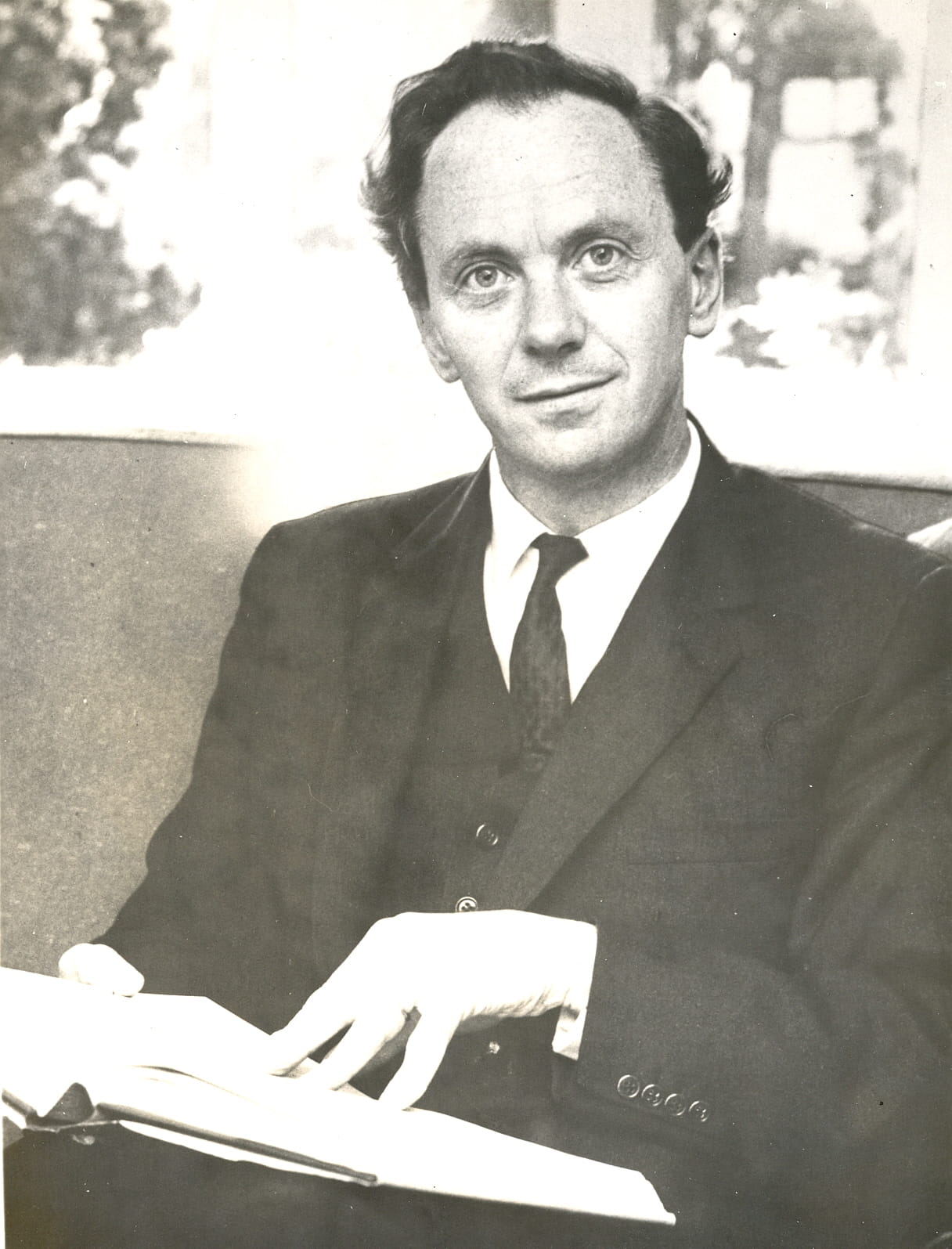The curatorial team behind the latest art exhibition in the Art Exchange, 'A University Art Collection in the Making', tell us how the idea for the exhibition came about.
Researching the founding of the University of Essex Art Collections

The idea for the show A University Art Collection in the Making emerged from Dr Sarah Demelo’s research on the founding of the University of Essex Art Collections. Throughout this research it became clear that the early donations of art to Essex, emerged from Essex’s founding Vice-Chancellor Albert Sloman’s own belief in the arts as an integral piece in having a rich and fulfilling life as a member of society.
When we set out to develop this exhibition, we knew we had to understand Sloman’s worldview and plans for the University from his own standpoint, which lead us to his 1963 BBC Reith Lectures titled ‘A University in the Making.’ Revisiting Sloman’s BBC Reith Lectures has been an incredibly enriching experience and source of inspiration to further understand the role that the arts have in transformational education at Essex. Sloman’s Reith Lectures can be understood as a blueprint for a different and radically innovative university. For Sloman, to meet the challenges of the modern world the University of Essex should be democratic in spirit, internationally broad in knowledge about other regions, and inter-disciplinary in its curriculum and he saw the arts to meet that challenge. The title of the show is a homage to Sloman’s ambitious vision for Essex University, taking inspiration from the title of his Reith Lectures.
Re-establishing the arts outside of London
It is likely that H.S. (Jim) Ede heard the 1963 Reith Lectures and saw in Albert Sloman an ally in their radical thinking. As the former second assistant to the Director of the National Gallery of British Art (later Tate Britain), Ede faced various difficulties from the arts establishment in London which, at the time, was sceptical towards modern art and resistant to acquire artworks from international artists. A fallout with art institutions led Ede to relocate to Morocco and only return in 1956 to fulfil his long-time vision to create a house filled with artworks he had collected throughout his life. This became Kettle’s Yard in Cambridge, a house which became a new type of museum, one where he opened the doors for students to engage and enjoy the artworks.
Ede shared with Sloman the ambition to create a place where accessibility to arts and awareness of international voices in contemporary issues could find a home. In April 1964, Ede donated 22 works of modern art to the University of Essex which became the foundation of the University Art Collection. The exhibition maps out this support and allyship between Albert Sloman and Jim Ede through their correspondence, extending from 1963 when they met and had the first talks about Ede’s generous donation of 20th century art until 1977, when Ede left Kettle’s Yard to retire in Edinburgh. One of the letters from Ede to Sloman is proof of their mutual admiration, in his letter dated 24 May 1968, he shares with Sloman his impressions an extended interview on the students protests of 1968, transmitted on 23 May 1968. Ede wrote that hearing Sloman made him wished he was younger and ‘could have come to you could have come to you and set up Kettle’s Yard in your midst.’ He would echo this sentiment on his letter of 28 May 1977, when writing from retirement in Edinburgh he wanders what would have happened if 'everything had come to you.’ Having proof that Ede had considered Essex to be the keeper of Kettle’s Yard is testament to Ede’s perception of Sloman as akin spirits looking to reinvent institutions, make them accessible and closer to us. Likewise, Sloman deeply admired Ede and this is evident in his letters to Ede which are featured in this show thanks to the generosity and support from Kettle’s Yard, Cambridge. This is the first time these letters have been at Essex since they were written to Ede back in the 1960s.
Donated works
Ede donated artworks, letters and books to the University of Essex. A ‘University Art Collection in the Making’ presents one of the most beautiful artworks donated to Essex, a portrait of Parisian socialite Mademoiselle Jeanne Bourgoint, painted by Christopher Wood, alongside the book intimately associated with this painting: Jean Cocteau’s Les Enfants Terribles. And is not just a copy which Ede generously gifted Essex but he gave us the editor’s proof of such book which includes a personal dedication from Cocteau himself to the artist, Christopher ‘Kit’ Wood. Together author and artist belonged to the same circle as the Bourgoints. This novel concerns the lives of brother and sister Paul and Elisabeth, who isolate themselves from society as they grow up and end up having a twisted affinity towards each other.
‘A University Art Collection in the Making’ is the culmination of a research process about the origins of the art collection at Essex but is also the start of this year’s celebration for the 30th anniversary of the foundation of Essex Collection of Art from Latin America, a product of joint effort between staff, lecturers and students at Essex which triumphs Sloman’s vision and reminds us why art is necessary in our lives.
Dr Sarah Demelo and Gisselle Giron
-
‘A University Art Collection in the Making’ is open at Art Exchange from 24 February to 24 March 2023.
The exhibition includes works by Alfred Wallis, Christopher Wood, Ben Nicholson, Henri Gaudier-Brzeska, Francisco de Goya and Taller de Gráfica Popular.
Please join us for the exhibition’s Launch Party on Thursday 09 March from 6pm to 8pm, and the exhibition’s curators’ tour on Tuesday 14 March from 2pm to 3pm. For more information, please visit Art Exchange’s website.
‘A University Art Collection in the Making’ is curated by Dr Sarah Demelo and Gisselle Giron




